Something Old, Something New
Our hotel came highly recommended by friends for the hilltop view of the city, great food, and incredible rooms. Well, two out of three wasn't bad. These clear skies and incredible landscapes simply can't be beat, especially when combined with near German quality breads for breakfast. However, at more than $35 a night, the spartan but expertly clean room simply felt over-priced.
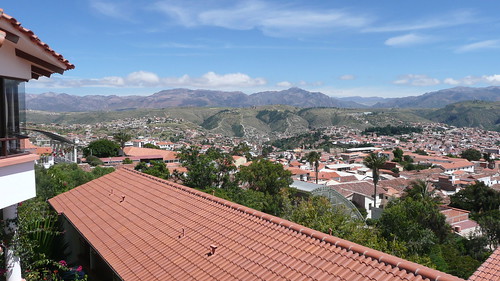
This is the exact same shot as last night, but this time in the daylight.
While Lipika talked to her boyfriend Dirk, ...
Moving to a new, less expensive, hostel across the street from Iglesia San Francisco, our roof deck had nothing to be ashamed of with this fuchsia display.
Iglesia San Francisco is an incredible complex, dominating a square city block. There are so many different views, that it is hard to find the perfect shot.
Subdued detail is everywhere and some of these pictures are added here just so I will have the chance to remember.
The Plaza 25 de Mayo is the figurative and literal center of Bolivia. The Cathedral marks the Western corner of the square, ...
complete with storied statuary. Even though the architecture is of Spanish design, much of the labor was native, including the casting for the statues. The Inca were a relatively technologically developed empire, prior to foreign occupation.
Just to the left of the Cathedral is Calle de Nicolas Ortiz or the "holy grail" of Gringo Eateries, which line the entire left side of the street.
After declaring and finally winning independence from Spain in 1825, Sucre was the state and civil capital of the new republic, aptly named after its liberating leader Simon Bolivar. During that same period the city's name was changed from the Spanish dictated Chuquisaca to Sucre, in honor of the focal military resistance general. More recently, the city of LaPaz has taken the status of "state capital" from Sucre, although the nations supreme court still convenes in the traditional local chambers.
Looking at the beautifully designed and colorfully decorated former capital building, I assumed that renovations must be under way, due to the plywood covering lower windows. Actually, what happened was the locals took revenge on their historic capital building a few weeks ago, because they were angry over an impending vote on a new constitutional and the migration of the national assembly to LaPaz. I understand the anger portion, but if a mob trashes the assembly building, does that really help their chances of the legislature returning? Where would they meet?
Our adventure target of the day predates the liberation and formation of Bolivia by a few million years. We were headed to see dinosaur foot prints at Francesa's cement quary. Spare change will get you a lift in this nifty contraption to the fringe of town and history.
If you close your eyes, forget about the altitude, imagine there are vast quantities of humidity hanging in the air, and soak up the sun, we could have easily been entering a theme park in Florida. The hype and visitor center were impressive, thanks to a multi-million dollar grant by the world monetary fund.
From across a fairly wide expanse, complete with working cement quarry, a sheet of solid volcanic sub-straight stands vertically.
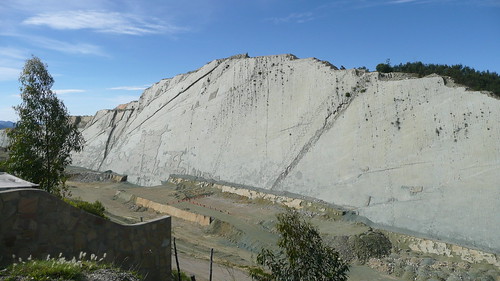
Millions of years ago, this slab was nothing but swamp bed near a lake. As a local volcano erupted, mega-tons of ash fell from the sky and settled. The dinosaurs must not have been too ignorant, because they fled the scene. As various layers of ash covered the tracks, the amalgamation hardened at differing rates, resulting in a firm foundation and a solid covering layer.
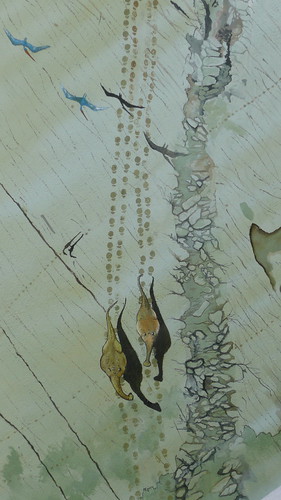
Gradual crust uplift and movement set this hundreds of meters long sheet on its side. Fortunately, for the preservation of the footprints, the thinner covering layer, shielding these dino-impressions is of no value for the manufacture of cement. So local laborers excavated along this natural divider for the better part of 30 years, before someone noticed that the thinner skim coat was fracturing, revealing an interesting pattern underneath.

Since importance has been put on these footsteps, preservation has been accomplished in typical Bolivian style, meaning, keep mining full speed ahead and allow the gringos to fund a visitor center across the valley. Well, hopefully the volcanic stone is strong enough to endure direct exposure to the weathering elements, after being covered for millions of years. The mining contract is due to expire in about five years, so we will have to see if it is renewed.
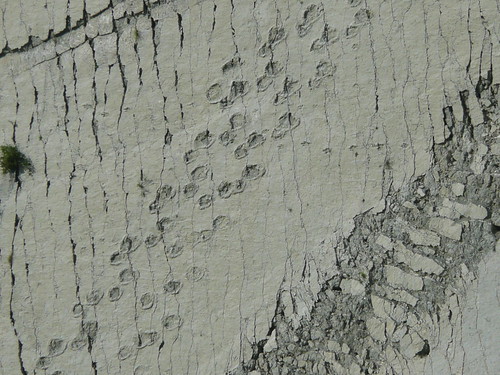
A beautiful advantage of the cement quarry location is a spectacular view, back towards the outskirts of Sucre. The newly constructed suburbs lay across these high mountains like a napkin across the rolling contour of a lap.

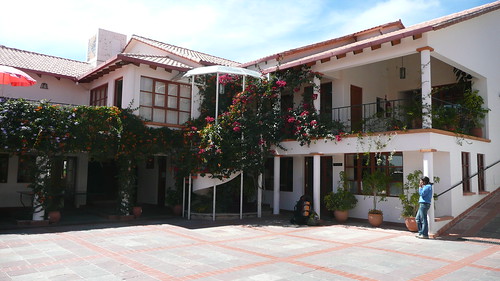

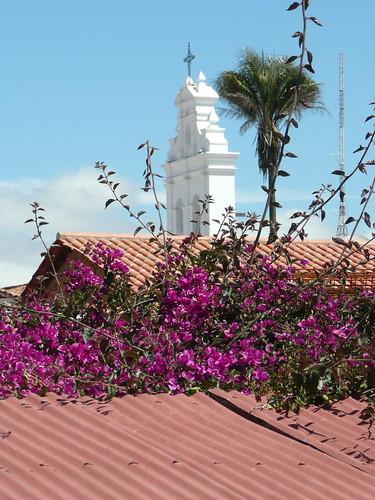
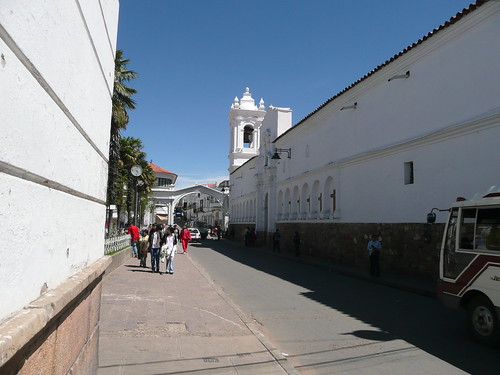

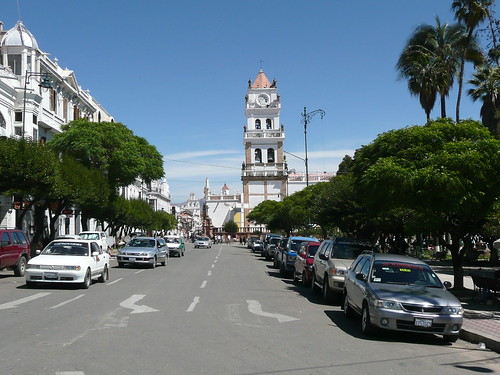
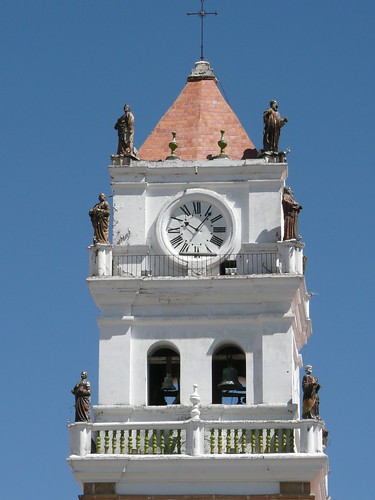
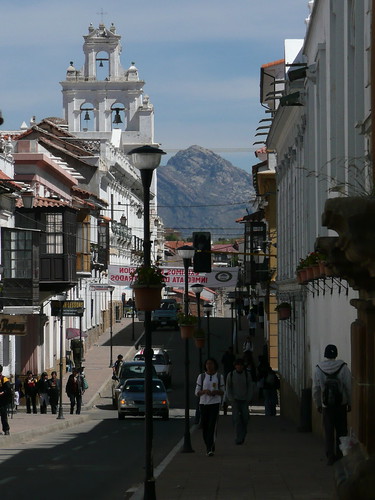
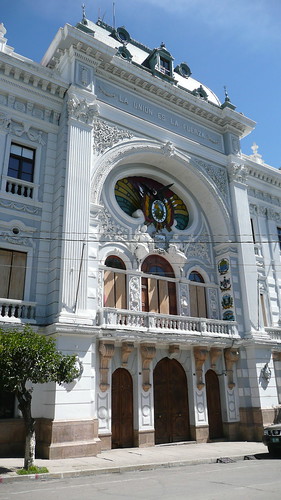
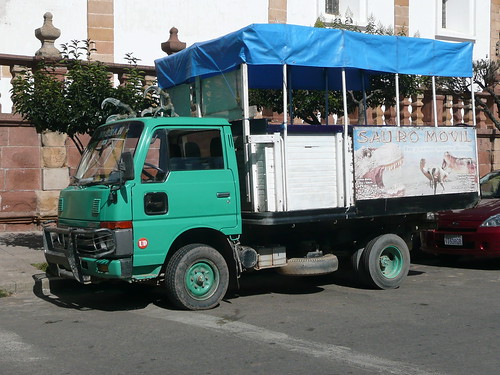
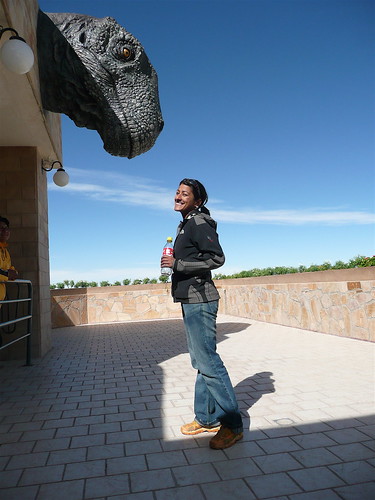
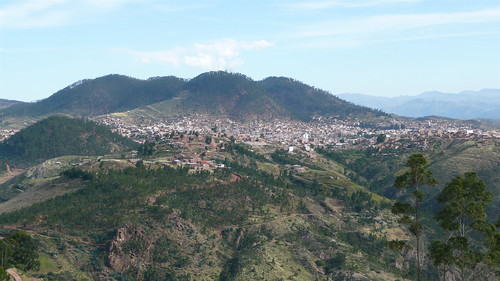
No comments:
Post a Comment